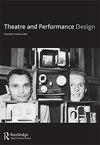Regenerative inspiration for ecoscenography
Q2 Arts and Humanities
引用次数: 1
Abstract
In the 12 years I have spent exploring sustainability in the performing arts, nothing has inspired me more than the concept of regenerative development and the creative projects that speak to this movement. Regenerative development is a place-based and community-orientated approach to sustainability that emphasises socio-ecological potential (du Plessis 2012). The term ‘regenerative’ focuses on ‘enhancing life in all its manifestations – humans, other species, ecological systems – through an enduring responsibility of stewardship’ (Cole 2012, 1). This holistic approach reconsiders limited notions of sustainability from one of moderation and restraint, to one of possibility and abundance, where local contexts, communities and place-specific aspirations take centre stage. Reframing sustainability as a notion of socio-ecological opportunity has been a crucial part of my development of The Living Stage – ‘a global initiative that combines stage design, horticulture and community engagement to create recyclable, biodegradable, edible and biodiverse performance spaces’ (Beer 2015) (Figure 1). The Living Stage was a response to my desire to adopt regenerative strategies that engender ‘thrive-ability’, where the aim is not only mitigating waste and environmental impact, but also seeking to create positive environmental and social outcomes. The project, which essentially combines theatre making with gardening, has been inspired by a number of creative projects and practitioners, many of whom exist outside of the performing arts, but have no less impacted my thinking and practice. I highlight a few key protagonists here.生态布景的再生灵感
在12年的时间里,我一直在探索表演艺术的可持续性,没有什么比再生发展的概念和与这一运动相关的创意项目更能激励我了。再生发展是一种以地方为基础、以社区为导向的可持续发展方法,强调社会生态潜力(du Plessis 2012)。“再生”一词的重点是“通过持久的管理责任来增强生命的所有表现形式——人类、其他物种、生态系统”(Cole 2012, 1)。这种整体方法重新考虑了可持续性的有限概念,从适度和克制转变为可能性和丰富,在这种情况下,当地环境、社区和特定地点的愿望成为中心舞台。将可持续性重新定义为社会生态机会的概念是我开发The Living Stage的关键部分——“这是一项结合舞台设计、园艺和社区参与的全球倡议,旨在创造可回收、可生物降解、可食用和生物多样性的表演空间”(Beer 2015)(图1)。Living Stage是我对采用再生策略以产生“繁荣能力”的愿望的回应。其目标不仅是减少浪费和环境影响,而且还寻求创造积极的环境和社会成果。这个项目本质上是将戏剧制作与园艺结合起来,它受到了许多创造性项目和从业者的启发,其中许多人存在于表演艺术之外,但对我的思考和实践产生了同样的影响。我在这里强调几个关键的主角。
本文章由计算机程序翻译,如有差异,请以英文原文为准。
求助全文
约1分钟内获得全文
求助全文
来源期刊

Theatre and Performance Design
Arts and Humanities-Visual Arts and Performing Arts
CiteScore
0.40
自引率
0.00%
发文量
14
 求助内容:
求助内容: 应助结果提醒方式:
应助结果提醒方式:


